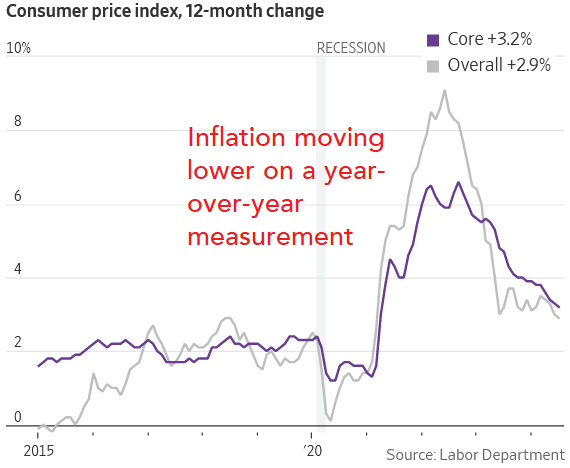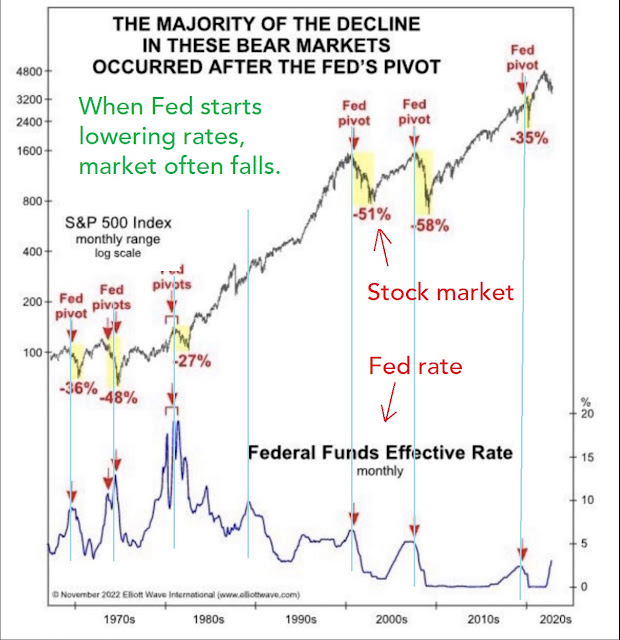Hello all - we hope had a nice August.
It was a mixed month for the markets, where a sharp drop at the beginning of the month and equally swift rebound left the markets with slight gains for the month. The Dow was up 1.8%, the S&P 500 rose 2.3%, and the Nasdaq, which has a higher concentration of tech stocks, gained 0.6%.
It was a mixed month for the markets, where a sharp drop at the beginning of the month and equally swift rebound left the markets with slight gains for the month. The Dow was up 1.8%, the S&P 500 rose 2.3%, and the Nasdaq, which has a higher concentration of tech stocks, gained 0.6%.
Volatility skyrocketed in the early days of August, but the quick selloff became a quick rebound and the volatility left as fast as it arrived.
____
AUGUST MARKET
What was behind the sharp market decline and the rebound this month?
The sharp decline in the early part of the month had a few contributors, but we’d say it was mostly triggered by news out of Japan where they announced an increase in their interest rates.
This country has seen heavy stimulus for decades, really, and they recently started to pull back on the stimulus. Their interest rates have been negative for 17 years, where they tried to force money out into the economy. The economy has recently started to improve and their inflation has subsided, so they decided to step back from some of the extreme stimulus measures.
Why was a rate increase in Japan important to our market? Since it is so cheap to borrow money there, many investors here in the US borrow money cheaply in Japan. They then use that money to invest in the stock market.
That increase in Japanese rates gave a shock to those investors and they sold stocks quickly as a result.
At the same time, the U.S. saw disappointing economic data where the employment figures were much lower than expected. You can see in the chart below how the number of jobs added have been decreasing.
This caused investors to also worry that a slowdown in the economy was coming and a recession was near.
Additionally, we learned the employment picture was even worse than reported.
First, every month these numbers are reported, but the following month they are almost always revised lower. Second, we learned this month that more than 800,000 of these jobs were being removed entirely due to a calculation error. The jobs picture is far worse than originally thought.
First, every month these numbers are reported, but the following month they are almost always revised lower. Second, we learned this month that more than 800,000 of these jobs were being removed entirely due to a calculation error. The jobs picture is far worse than originally thought.
As the market was falling, investors started to realize that maybe the bad news was good news for the market.
The Fed appears highly likely to cut interest rates at their next meeting. The minutes from their most recent meeting gave the strongest indication yet that a cut was coming. Additionally, most Fed speakers making comments this month said the time has come for cuts.
The markets were encouraged by the news and started their climb higher.
The only question now is how much they will cut. It feels like the market is looking for a 0.50% cut at their upcoming meeting in September. However, the Fed may be more inclined to do a 0.25% cut. This could be an issue the market grapples with in the coming weeks.
____
INFLATION
Let’s look at the inflation data from this month.
The annual inflation rate ticked lower again this month, with the headlines celebrating that the inflation rate now had a ‘2’ handle with inflation growing 2.9%.
But that’s looking at inflation from an annualized measurement (counting the previous 12-month numbers). When you look at inflation month-by-month, inflation is still rising, just not as quickly. That means prices are still going up, just not as fast. Any regular shopper could tell you that.
When excluding energy and food from the calculation (which economists call the “core” measurement), we can see inflation still rising every month – just not rising as much as before.
The PPI, which is the inflation at the business level before they pass on the price increases to us, rose again last month.
____
ECONOMIC DATA
We’ll start with some general economic observations.
What we’re seeing from corporate earnings reports is that people on the higher end of the income spectrum are doing fine. It’s the lower-income Americans that are doing poorly. Many companies that serve this demographic have cited a major slowdown from these shoppers as they have been hurt by higher prices.
As costs go up, many people are turning to their credit cards. We’re starting to see more people late on their credit card (and auto) payments, as well. The level of late payments tends to rise around recessions.
Another recession indicator we’ve talked about often is the yield curve. This topic can be wonky and we won’t get into exactly what this is, but the important part is the chart below. When the yield curve (the blue line) starts rising again, recessions are almost always around the corner.
A recession indicator we talk about every month is the leading economic indicators. This index combines several indicators that tend to signal the direction of the economy (like weekly unemployment numbers, building permits, etc.).
This index had been lower for 22-straight months before finally turning higher five months ago. Unfortunately, that positive report is looking like a one-off as the index continues to deteriorate. This report is a good recession indicator, but it hasn’t been very good at telling us ‘when’ the recession will arrive. Regardless, it remains an important indicator to follow.
This index had been lower for 22-straight months before finally turning higher five months ago. Unfortunately, that positive report is looking like a one-off as the index continues to deteriorate. This report is a good recession indicator, but it hasn’t been very good at telling us ‘when’ the recession will arrive. Regardless, it remains an important indicator to follow.
The manufacturing part of our economy was looking like it was improving; however, the last four months showed a decline as it moved back into contraction territory (a number below 50 indicates contraction).
On the other hand, the service side of our economy took a turn higher last month.
On the other hand, the service side of our economy took a turn higher last month.
Retail sales saw a nice gain on the month.
Durable goods (these are items with a longer life, like a phone or refrigerator) saw a solid improvement, too.
Although, that rise in durable goods was due to a few large aircraft orders. Take those away and durable goods were actually lower.:
Consumer confidence moved slightly higher:
Small business optimism moved nicely higher, too:
____
Where does the market go from here?
We quickly went from oversold conditions in the market (cheap) to overbought (expensive). Normally we’d be pretty cautious here, but an interesting note is that these quick gains often see even more gains, so its possible the market can keep going higher.
However, September and October tend to be very volatile months, especially in election years.
Further, all eyes will be on the Fed this month and their expected rate cut. While investors are excited to see easier conditions, the market often falls after the first rate cut. As you can see in the chart below, a lower Fed Rate (the blue line at the bottom) tends to see the market fall right after.
We’d remain cautious here.
This commentary is for informational purposes and is not investment advice, an indicator of future performance, a solicitation, an offer to buy or sell, or a recommendation for any security. It should not be used as a primary basis for making investment decisions. Consider your own financial circumstances and goals carefully before investing. Past performance cannot guarantee results.
This commentary is for informational purposes and is not investment advice, an indicator of future performance, a solicitation, an offer to buy or sell, or a recommendation for any security. It should not be used as a primary basis for making investment decisions. Consider your own financial circumstances and goals carefully before investing. Past performance cannot guarantee results.






















